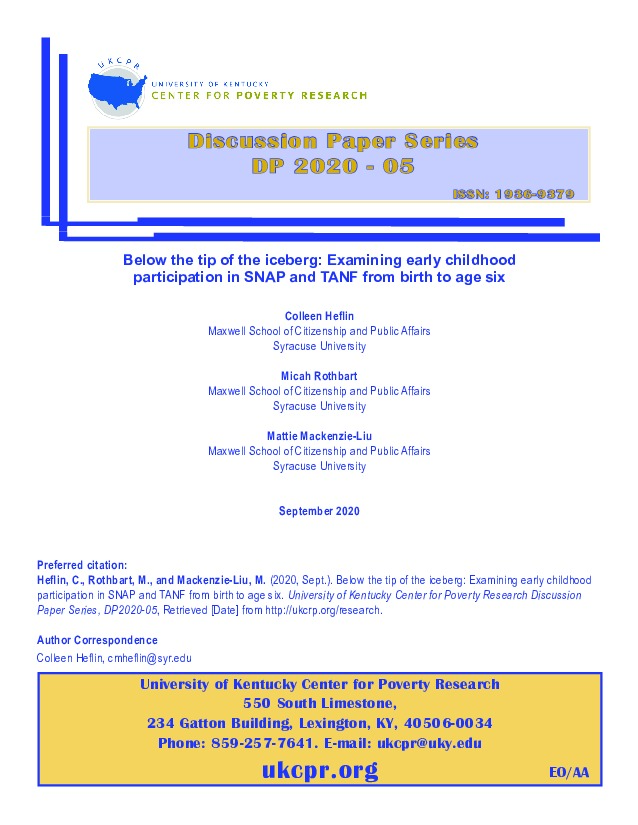Previous research has shown that investments during the early childhood period are likely to have the highest social return. We use administrative data from Virginia to document participation in SNAP and TANF among children born between 2007- 2010 during their early childhood period, which we define here as birth to age six. We find that participation in SNAP is about four times greater than participation in TANF and that most children begin their connection with the social welfare system in their birth year. Children who participate earlier in life tend to stay connected over a longer portion of the early childhood period, although SNAP participation peaks around ages 3-4 while TANF peaks earlier, around ages 2-3. In terms of joint participation, most households on SNAP do not receive TANF and about 1 in 12 children on TANF do not receive SNAP. Finally, over the early childhood period, on average, just under 1 in 2 children in Virginia participated in SNAP or TANF but demography plays an important role in this process: The level of cumulative receipt is 1 in 4 among White children, 1 in 2 among Hispanic children but rises to 3 in 4 for Black children; cumulative receipt is also higher in nonmetropolitan counties than metropolitan counties. This study documents the reach of the existing social welfare system during the early childhood period, underlining the importance of race and space in 21st century America.
Research
SNAPPDF Thumbnail
